Terms
- (immediately) dominates
- (immediately) precedes
- C-Commands
Observation 1 about dominance and precedence: For any two nodes in the same tree, either one precedes the other or one dominates the other.
Observation 2 about dominance and precedence: Dominance and precedence are mutually exclusive.
Observation about immediate dominance: a node can have only one mother.
-
Fred believes John to be a fool.
Exhaustively dominates: Holds between a node M and the set D of all nodes that M immediately dominates. Thus, there must be nothing that M immediately dominates that is not in D. Answer 1.17 on. p. 70: V, NP2 and PP.
Definition: Node A C-commands Node B if every branching node dominating A also dominates B, and neither A nor B dominate the other.
Note that C-Command and domination are mutually exclusive, just as C-Command and precedence are.
Question: For any two nodes in the same tree, is it the case that one must either dominate or C-command the other other? If not, give an example of two nodes in the same tree such that neither C-commands the other and neither dominates the other.
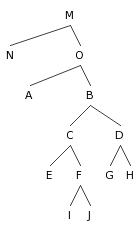
Question: Can two nodes C-command each other? Examples?
Selected
Examples
bright blue train

Compare: a bright blue star in Cygnus
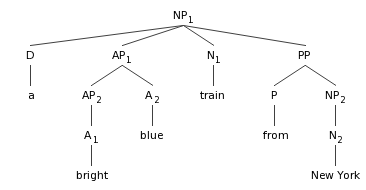
(2g) Louis hinted Mary stole the purse deftly.

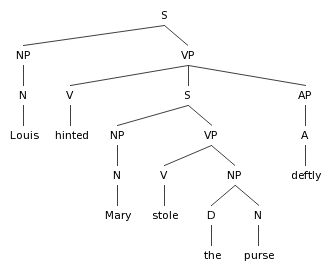
relations
Answer to (2a):

- NP1 C-commands:
-
VP, V, NP3, N3, PP2, P, NP4,
N4, N5,
- NP1 asymmetrically C-commands:
-
V, NP3, N3, PP2, P, NP4,
N4, N5,
- NP1 dominates
-
D, N1, PP1, P1 NP2,
N2
- NP1 immediately dominates
-
D, N1, PP1,
- NP1 precedes
-
VP, V, NP3, N3, PP2, P, NP4,
N4, N5,
Three possible answers (at least).
- The main verb must precede the expression and be negated.
- A negative element must precede the expression
- A negative element must C-command the expression.
Further data: lift a finger:
- He didnt lift a finger to help.
- * He lifted a finger to help.
- He rarely lifted a finger to help.
- He seldom lifted a finger to help.
- ? A finger wasnt lifted to help. [on idiomatic reading]
- Not a finger was lifted to help.
- * I think that he lifted a finger to help.
- I dont think that he lifted a finger to help.
- * The man who didnt have any money lifted a finger to help.
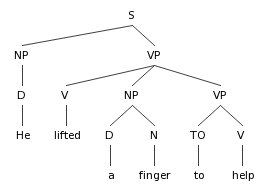
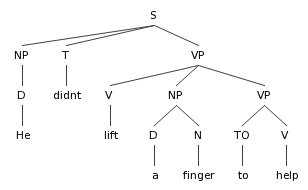


-
The plucky platypus kicked a can of soup from Tucson to New York.
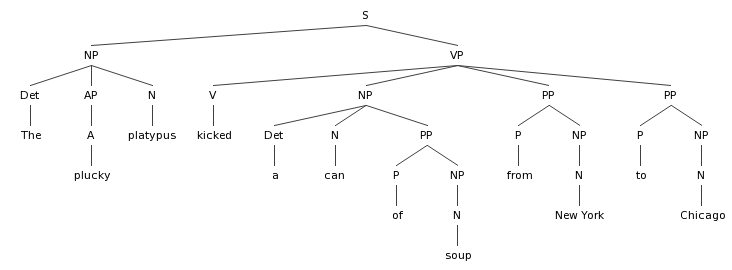 ... while traveling from N.Y. to T.
... while traveling from N.Y. to T.
 ... the can was from N.Y.
... the can was from N.Y.
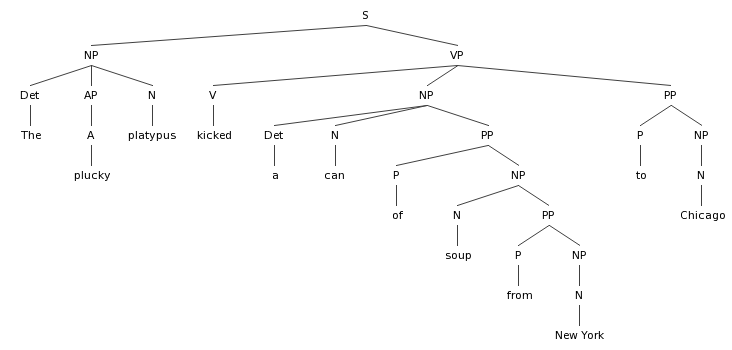 ... the soup was from N.Y.
... the soup was from N.Y.